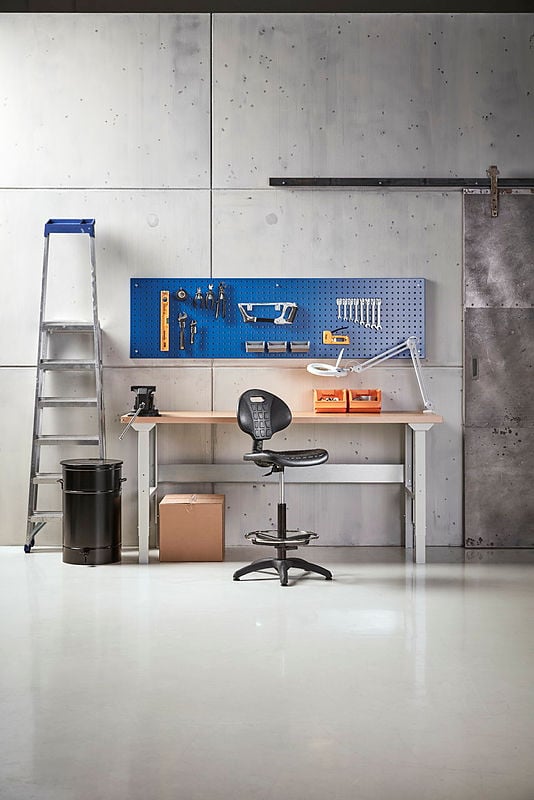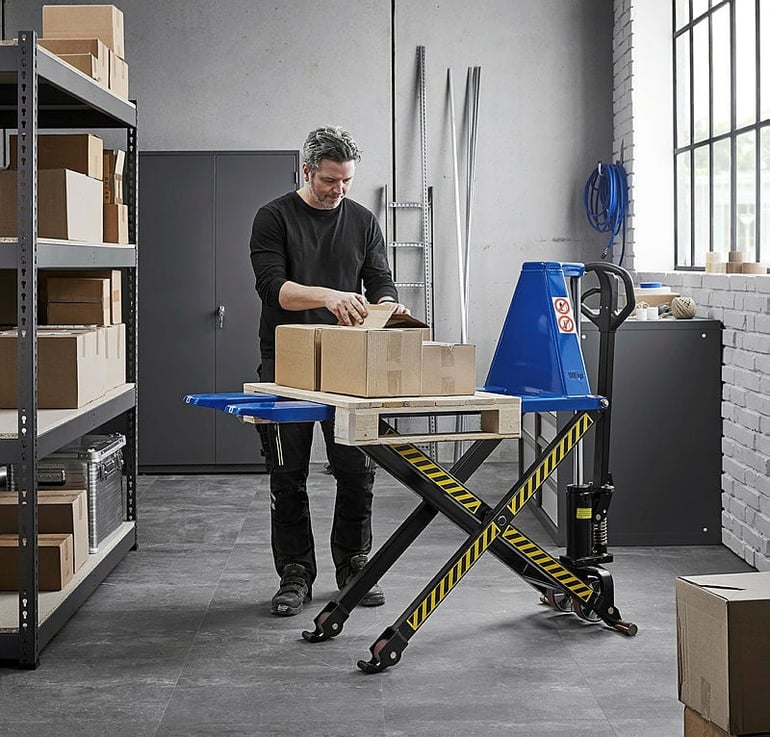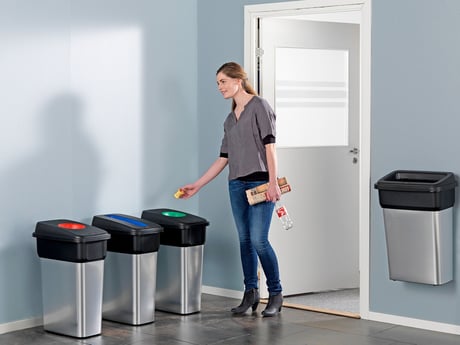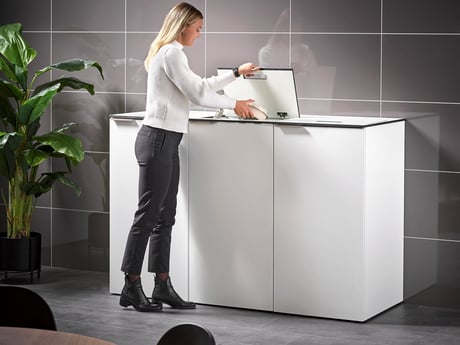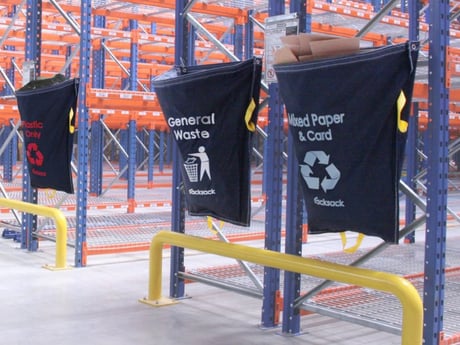- AJ Products UK
- Blog: Tips to Inspire Happiness at Work
- Tips & trends
- Warehouse of the future - Trends for 2024
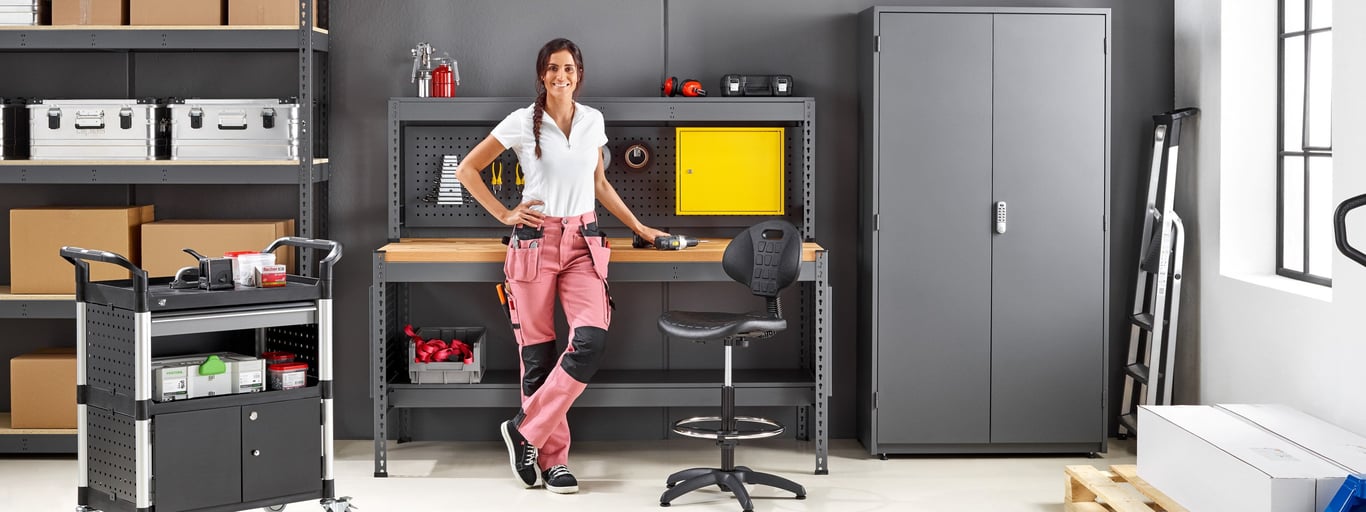
Warehouse of the future - Trends for 2024
Warehouses are evolving, driven by automation, e-commerce, and changing consumer demands. While robots and AI steal headlines, furniture plays a crucial role in shaping the future.
In 2024, the trends in warehouse furniture are undergoing a notable change, focusing more on sustainability, efficiency, and employee well-being. Businesses are increasingly aware of how the physical environment affects both logistics and human capital. As a result, they are now making strategic decisions to incorporate furniture solutions that provide tangible benefits in these crucial areas.
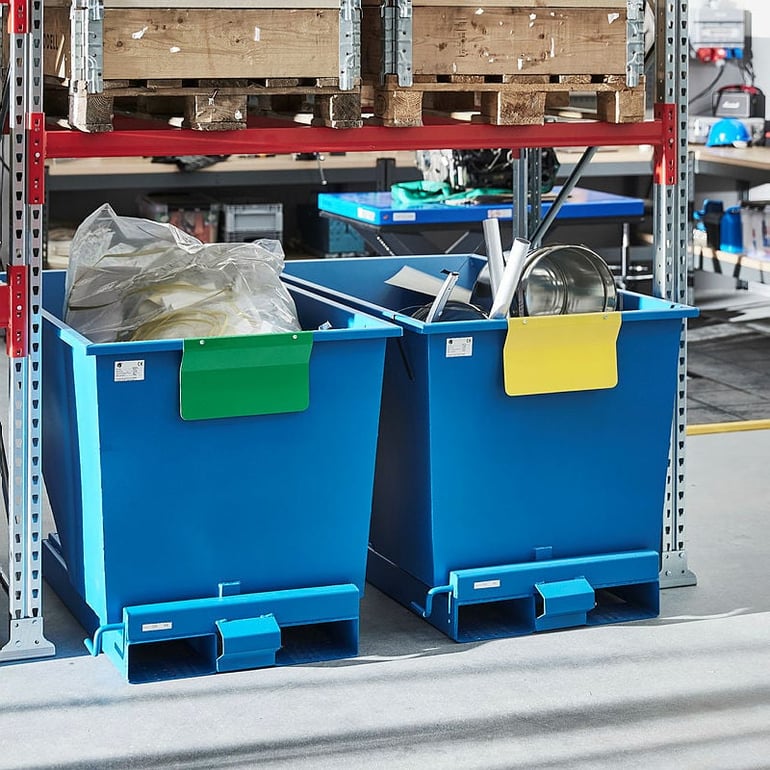
From waste to resource: recycled & renewable material
The once-ubiquitous single-use plastics in warehouses are quickly disappearing. Instead, businesses are embracing a circular economy, favouring alternatives like sturdy storage bins made from recycled plastics, such as high-density polyethylene (HDPE) and polypropylene (PP). These alternatives have strong sustainability credentials, turning post-consumer waste into valuable resources. This reduces dependence on virgin materials and lessens landfill burdens, all while their durable construction ensures long-term use and cost savings.As a substitute for plastic, bamboo and reclaimed wood are becoming increasingly appealing. These renewable resources offer a mix of natural elegance, strength, and low volatile organic compound (VOC) emissions, making them perfect for furniture components like workbenches or shelving. They also symbolise responsible natural resource management, contributing to a closed-loop material cycle.
Reclaimed wood, responsibly sourced from certified UK forests, provides a distinctive aesthetic. This approach encourages the efficient use of existing resources, reducing reliance on new harvesting activities.
Reclaimed wood, responsibly sourced from certified UK forests, provides a distinctive aesthetic. This approach encourages the efficient use of existing resources, reducing reliance on new harvesting activities.
Choosing furniture that is designed with disassembly and reconfiguration in mind can significantly reduce waste. This approach allows for the repurposing of components within the warehouse as needs change, extending their lifespan and reducing the need for frequent replacements.
In UK warehouses, sustainability is a top priority, and the human element is increasingly important. Ergonomic furniture solutions are becoming essential, not only for promoting environmental responsibility but also for enhancing employee well-being and productivity.
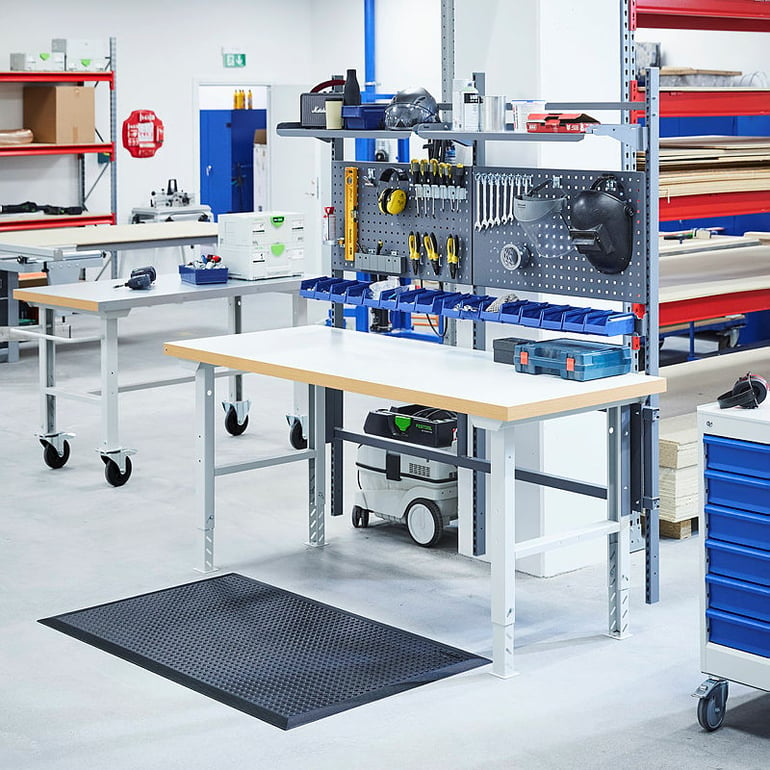
Dynamic work spaces
Dynamic workspaces are becoming increasingly popular, offering a range of benefits for workers. Adjustable height desks and workbenches empower employees to switch between sitting and standing, reducing sedentary behaviour and associated musculoskeletal issues. These workstations promote improved circulation, reduced fatigue, and enhanced focus.This means individuals can transition between tasks at a desk customised to their height or working at a raised workbench while packing or assembling, relieving strain on theirback and legs.
Ergonomic chairs are also essential, providing optimal back, neck, and arm support. Chairs that adapt to individual body types minimise discomfort and fatigue, ensuring sustained comfort throughout the workday.
Technology is playing a significant role in shaping the future of ergonomics, enabling personalised workspaces tailored to each worker's needs. We envision desks, workbenches, and chairs automatically adjusting based on individual biometric data, ensuring optimal posture and comfort.
Focus on Mental & Emotional Wellbeing
Warehouses are now focusing on mental and emotional well-being, not just physical comfort. They are integrating furniture solutions that promote relaxation and reduce stress. This includes biophilic design elements like natural light and greenery, furniture with built-in noise cancellation features, and dedicated relaxation zones with comfortable seating and calming lighting. This holistic approach fosters a happier and healthier workforce, leading to reduced absenteeism and increased employee engagement.
Sensor-Driven Insights: Making Informed Decisions
Embedded sensors in furniture represent a data goldmine, revolutionising the way warehouses operate. Here's a glimpse:
- Real-time tracking: Monitor furniture location and utilisation, maximising space efficiency and reducing wasted space by 15%.
- Proactive maintenance: Sensors predict issues before they arise, minimising downtime by 20% and reducing costly disruptions.
- Data-driven inventory: Track individual components within units, ensuring real-time stock visibility and automated reordering with 99% inventory accuracy.
Robot Collaborators: Reimagining Workflows
Automation isn't about replacing workers; it's about collaboration. Robots enter the scene not as competitors, but as partners, freeing up human teams for higher-value tasks:- Seamless assembly: Robots assemble furniture modules, increasing speed by 50% and freeing up workforce capacity.
- Automated maintenance: Robots handle tasks like tightening bolts, ensuring optimal equipment performance and minimising disruption. Imagine 24/7 uptime and productivity.
- Collaborative lifting: Robots help with heavy items, reducing injury risks and boosting overall safety.
The ROI of Sustainable Furniture Choices
Availability and adaptability: Sourcing certain sustainable materials may initially pose challenges due to their limited availability in the UK market. However, the landscape is evolving rapidly. Partnering with local suppliers specialising in reclaimed wood or exploring modular furniture designs can overcome these hurdles. Additionally, collaboration with design firms specialising in sustainable solutions can pave the path for tailored options.Initial cost versus long-term value: While sustainable materials may initially carry a higher price tag, conducting a comprehensive return on investment (ROI) analysis is crucial. Factor in long-term cost savings from reduced energy consumption through LED lighting or waste disposal fees minimised by efficient recycling programs and modular furniture. Remember, investing in employee well-being through ergonomic, comfortable furniture leads to increased productivity and reduced turnover, further boosting your bottom line.
investing in employee well-being through ergonomic, comfortable furniture leads to increased productivity and reduced turnover, further boosting your bottom line.
Get the latest product launches and offers sent direct to your inbox
Do you want to receive exclusive offers, information about new products and inspiration on how you can improve your workplace? Sign up for our free newsletter and be the first to receive our best offers!Please wait...
*By clicking subscribe, I confirm that I have read the privacy policy.
